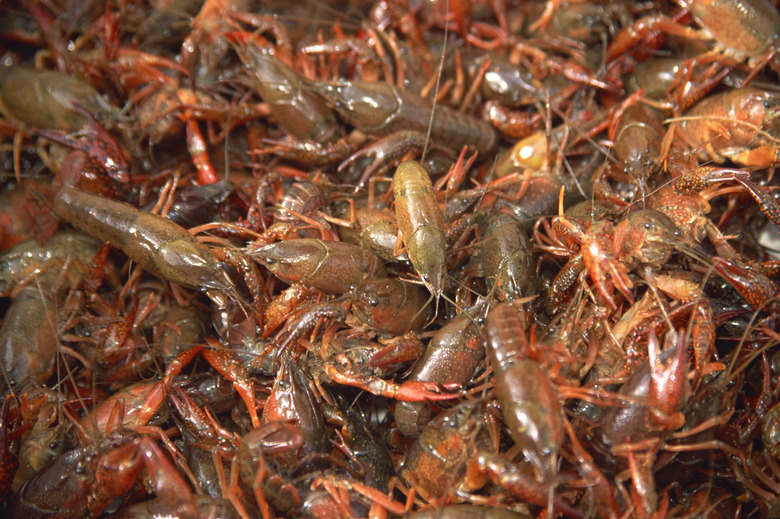How To Set Up A Freshwater Crayfish Farm
Things Needed
-
Pond
-
Pond liner
-
Mud or PVC pipes
-
Filter balls
Tip
Some aquaculture crayfish farms plant rice in the ponds to help remove nitrates.
Aquacultured — also known as farmed — crayfish have been researched for around 30 years and much is known about how to successfully raise these crustaceans. Why you are raising the crayfish determines much of your setup. If you are raising the crayfish for personal consumption, you will likely need a smaller-scale pond than if you are raising them for profit. Before embarking on this project, make sure you check with state and local laws governing aquaculture.
Step 1
Line the pond with waterproofing material. If the pond is very large and you have a consistent supply of clean water, you may not need the lining. If water is in short supply or you are using a small pond in your yard, the lining will help conserve water and reduce costs.
Step 2
Add a layer of mud to the pond about 15 inches deep. If the crayfish are a non-burrowing species, such as Australian redclaw crayfish, replace the layer of mud with hiding places made from PVC pipes or boxes.
Step 3
Set up a robust biological filtration system. Crayfish are very sensitive to ammonia and nitrite, both of which are by-products of feeding and waste. The best way to remove these chemicals is by encouraging the growth of beneficial bacteria on filtration media. For smaller ponds, you can use plastic or ceramic "bioballs" or glass marbles to provide area for the bacteria to grow. Run the water over the media, so that it trickles down over the balls, allowing exposure to the air. For larger ponds, the process should be accomplished in the pond itself, provided proper feeding schedules are maintained.
Step 4
Provide a method of nitrate export. Nitrates are produced when bacteria oxidize nitrite. Nitrate is less toxic to crayfish than nitrite, but in high enough levels, it can cause disease and stress the fish. Nitrates are best removed using live plants, which use the chemical as a fertilizer. You can use freshwater plants in the pond itself or send the water through a hydroponic system.
Step 5
Fill the pond with water and cycle the water. "Cycling" is simply adding organic matter to the water and allowing time for beneficial bacteria to grow. If you are using a filtration system, turn it on at this time. If you are using live water from a lake, river, stream or swamp, your cycle time will only be a few days. If you are using dechlorinated tap water, add a gallon or so of old freshwater aquarium or pond water to introduce the bacteria. Adding a small amount of food to the water will help the bacteria grow.
Step 6
As the pond cycles, test the water frequently for ammonia, nitrite and nitrate. You will see the levels of ammonia rise and fall, followed by a rise and fall of nitrite, then a rise of nitrate. When ammonia and nitrite are undetectable, it is safe to add the crayfish.
